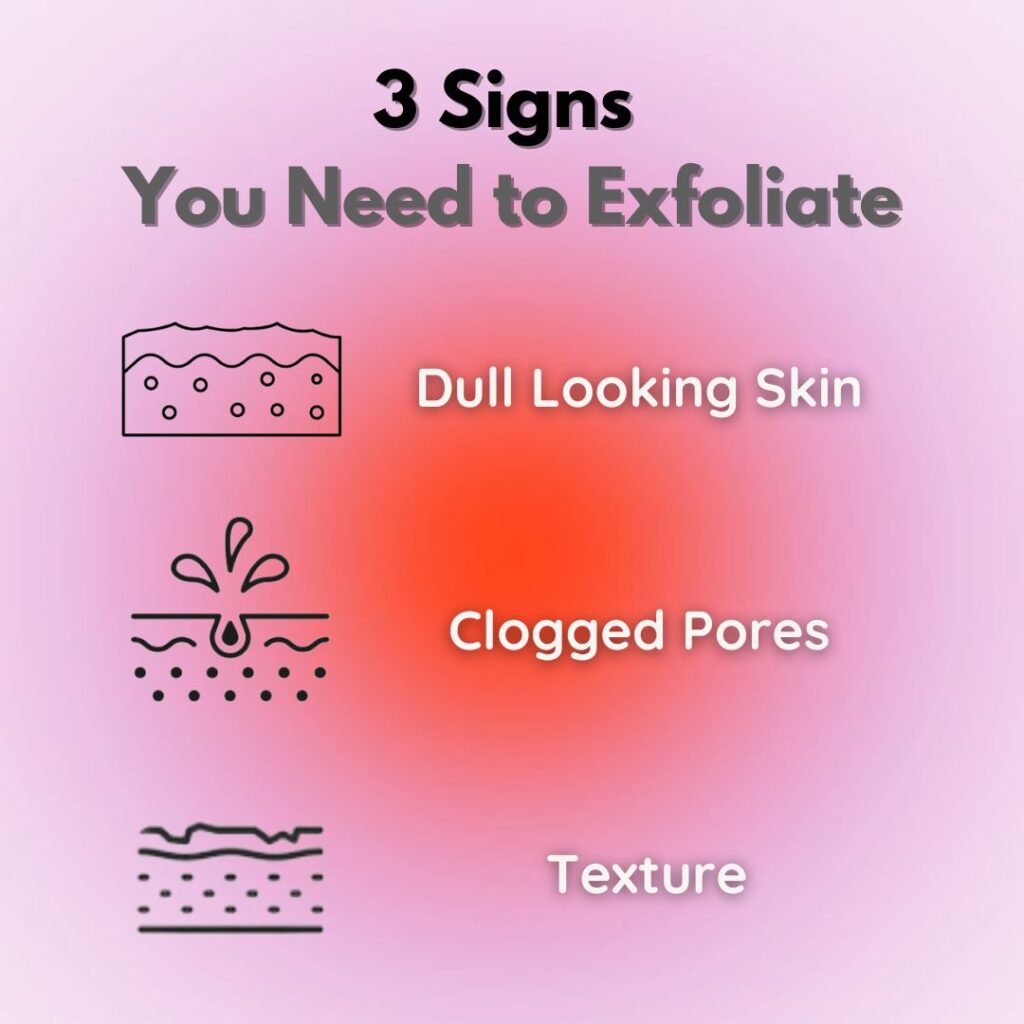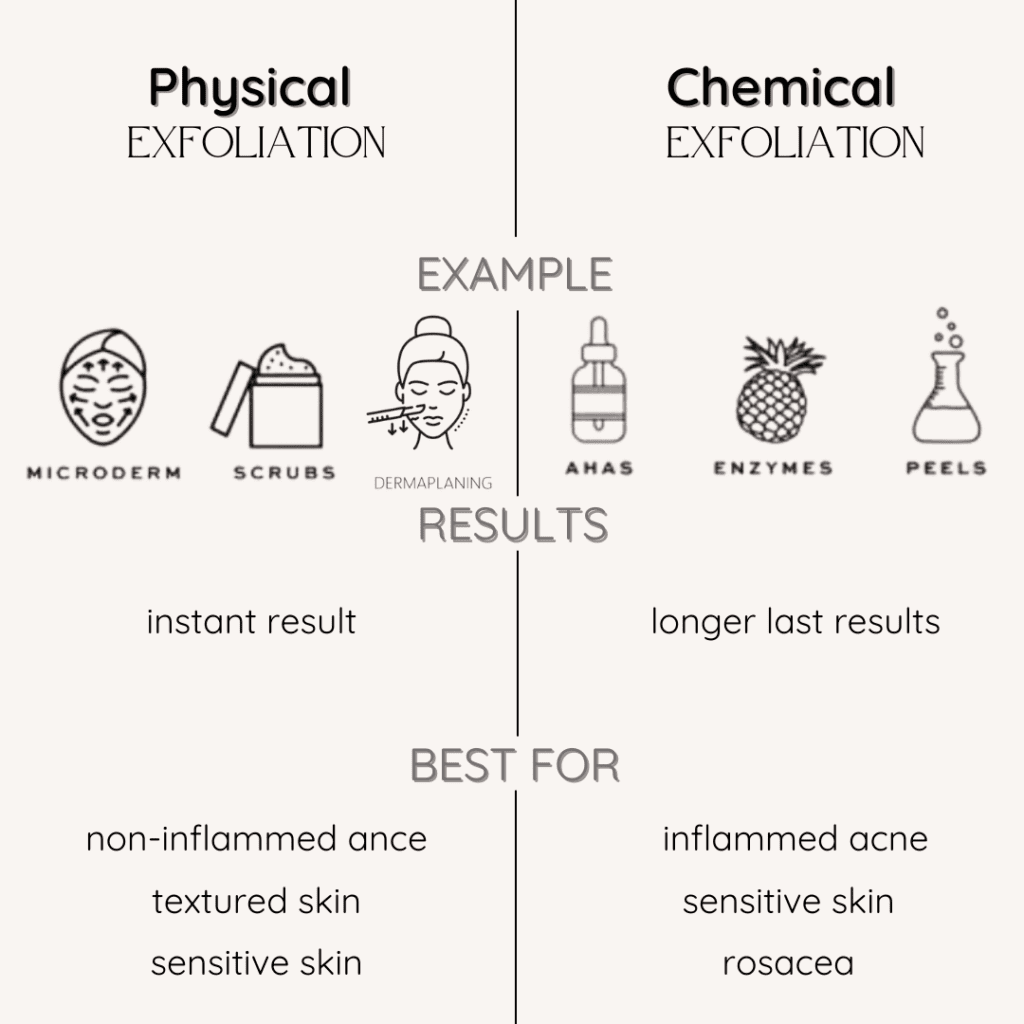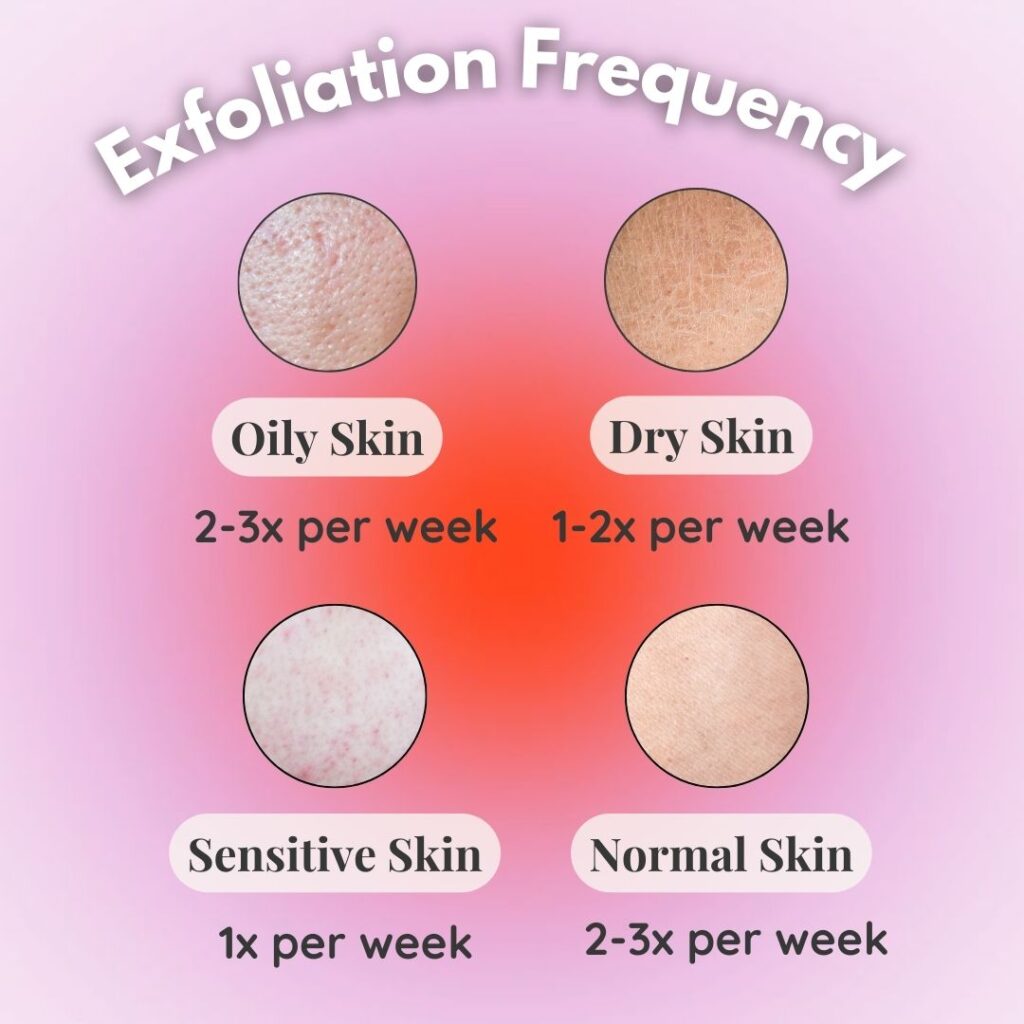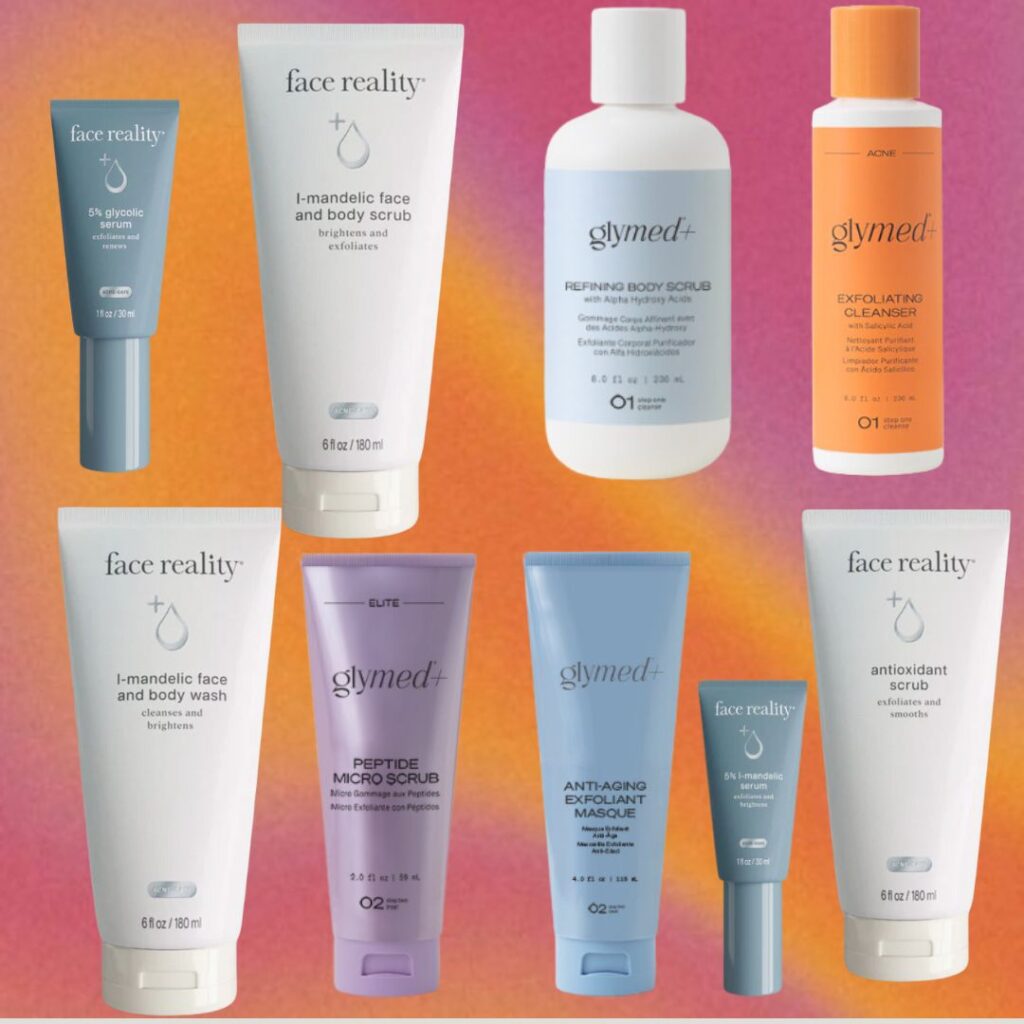A Simple Guide for Radiant Skin
Exfoliation 101 | Why Exfoliate | How Often to Exfoliate | Signs of Over Exfoliation | Choosing the Right Toner
Let’s chat about something that can make a huge difference in your skincare routine: exfoliation. If you’ve ever wondered how often you should be scrubbing away those dead skin cells or if you’re overdoing it, you’re in the right place. Let’s break down the ins and outs of exfoliation in a friendly, easy-to-understand way.

Exfoliation 101
First things first, let’s clarify what exfoliation actually is. Exfoliation is the process of removing dead skin cells from the surface of your skin, revealing the fresh, glowing skin underneath. Think of it as spring cleaning for your face! There are two main types of exfoliation:
- Physical Exfoliation: This is where you use scrubs or tools like brushes or sponges to manually slough off dead skin. It can feel like giving your skin a little spa day, but be careful—too much scrubbing can lead to irritation!
- Chemical Exfoliation: This involves using products that contain ingredients like AHAs (alpha hydroxy acids) or BHAs (beta hydroxy acids) to dissolve dead skin cells. It’s like a little magic potion that works while you relax!

Why is Exfoliation Important?
You might be thinking, “Why should I even bother with this whole exfoliation thing?” Well, exfoliation is a game changer for your skin! Here are a few reasons why you should consider incorporating it into your routine:
- Smoother Skin: Regular exfoliation helps improve your skin’s texture, making it feel soft and velvety.
- Brighten Up: By removing dead skin cells, you allow fresh skin to shine through, which can give your complexion a brighter look.
- Unclogs Pores: Exfoliating helps prevent clogged pores, reducing the chances of pesky breakouts.
- Better Product Absorption: When your skin is clear of dead cells, it can absorb other skincare products better, making your serums and moisturizers more effective.
How Often Should You Exfoliate?
Now, onto the burning question: how often should you exfoliate? The answer isn’t one-size-fits-all, as it really depends on your skin type. Here’s a general guideline to help you out:

- Oily/Acne-Prone Skin: You can exfoliate 2-3 times a week. Look for products with BHAs (like salicylic acid) that can penetrate pores and help keep them clear.
- Dry Skin: You might want to stick to 1-2 times a week. Go for gentler AHAs (like lactic acid) that provide hydration while exfoliating. Your skin will thank you!
- Sensitive Skin: If your skin is prone to redness or irritation, limit exfoliation to once a week. Opt for mild products, like enzyme exfoliants, to avoid any irritation.
- Combination Skin: You’re in luck! You can exfoliate 1-3 times a week, focusing more on the oily areas (like your T-zone) and being gentle on dry patches.
- Normal Skin: Lucky you! Feel free to exfoliate 2-3 times a week with whatever method works best for you.
Remember, these are just guidelines. Always listen to your skin! If it starts feeling irritated or sensitive, you might need to dial it back. Whatever you just exfoliated needs to be hydrated! Remember to use a moisturizer best for your skin. Don’t know which one to use? Check out some recommendations here!
Signs You’re Over-Exfoliating
Okay, here’s a little warning: exfoliating can be super beneficial, but there is such a thing as too much of a good thing! Here are some signs that you might be overdoing it:
- Redness and Irritation: If your skin looks red or feels irritated after exfoliating, it’s time to cut back.
- Dry Patches: Over-exfoliation can strip your skin of its natural oils, leading to dryness or flakiness.
- Increased Breakouts: Sometimes, exfoliating too much can irritate your skin and lead to more breakouts. No one wants that!
If you notice any of these signs, give your skin a break and reduce how often you’re exfoliating. Using a chemical exfoliant might be a better option.
Choosing the Right Exfoliant for Your Skin Type
Now that we know how often to exfoliate, let’s talk about choosing the right exfoliant for your skin type. The world of exfoliants can be a bit overwhelming, but don’t worry, I’ve got some tips to help you navigate:
- For Oily/Acne-Prone Skin: Look for exfoliants containing salicylic acid (a BHA) that can penetrate pores and help clear out gunk. You might enjoy a lightweight gel or a chemical peel.
- For Dry Skin: Try a gentle exfoliant with lactic acid (an AHA) or mild fruit enzymes. These will exfoliate while also hydrating your skin. A creamy scrub or a hydrating mask could be your best friend.
- For Sensitive Skin: Go for an enzyme exfoliant made from natural ingredients like papaya or pineapple. These are gentle and effective without being too harsh.
- For Combination Skin: You can mix and match! Use a BHA for your oily areas and an AHA for your dry spots. This will help address your unique needs without over-exfoliating. Using an AHA serum might be a better choice for everyday use.
- For Normal Skin: Lucky you! You can play around with different types of exfoliants, including both physical and chemical options. Just remember to listen to your skin!

Exfoliation Tips for Best Results
To make the most of your exfoliation routine, keep these handy tips in mind:
- Don’t Forget to Moisturize: Whatever was exfoliated must be moisturize! After exfoliating, always follow up with a good moisturizer. This helps replenish your skin’s hydration and keeps it feeling soft.
- Use Sunscreen: Exfoliating can make your skin more sensitive to the sun, so always wear sunscreen during the day, especially if you’ve just exfoliated. SPF is your best friend!
- Start Slow: If you’re new to exfoliating, start with once a week and gradually increase as your skin gets used to it.
- Patch Test: If you’re trying a new exfoliant, do a patch test first to see how your skin reacts before applying it all over your face.
- Listen to Your Skin: Always pay attention to how your skin responds. If it’s feeling irritated or dry, scale back on the exfoliation. Your skin will tell you what it likes!
And there you have it! Exfoliation can be a fantastic addition to your skincare routine if done correctly. Remember to tailor your exfoliation frequency and products to your unique skin type, and always be mindful of how your skin reacts. With the right approach, you’ll be well on your way to smooth, glowing skin in no time!
Ready to glow? Let’s start this skincare journey together! Shop Now.
Follow on Instagram @saltycoveskin